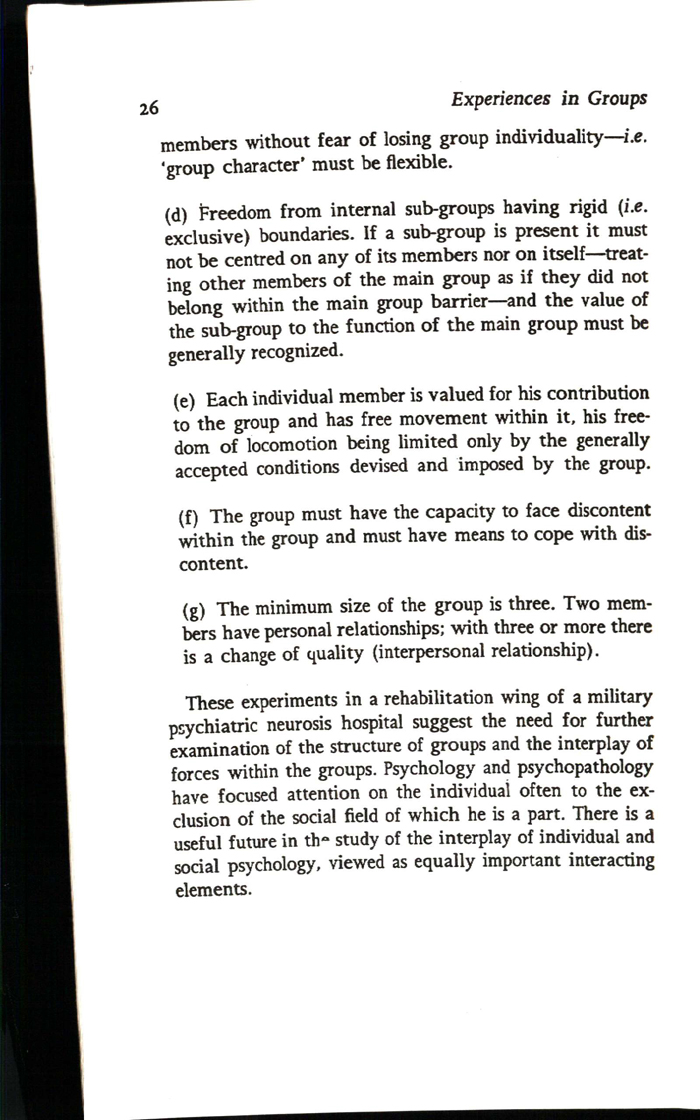At the appointed time members of the group begin to arrive; individuals engage each other in conversation for a short time, and then, when a certain number has collected, a silence falls on the group. After a while desultory conversation breaks out again, and then another silence falls. It becomes clear to me that I am, in some sense, the focus of attention in the group. Furthermore, I am aware of feeling uneasily that I am expected to do something.
– W.R. Bion
In 1948 the psychoanalyst, W.R. Bion was invited by the Tavistock Clinic in London to meet with patient-groups of eight to nine people in order to implement his new technique in group therapy. Despite Bion’s previous experience treating groups of psychiatric and war veteran patients, he found his own role inside the therapy-group highly problematic. By restraining his position of authority and denying the clinical reason for the group’s existence, he witnessed and recorded a number of situations particular to group behavior.
The ‘working group’ displays habitual levels of neurosis and anxiety as it tries to find a new common purpose. Through this interaction W.R. Bion hoped to see a development of forces that lead to co-operation. He saw experiments in treatment as both the product and the common aim of the group. Bion’s compilation of essays, Experiences in Groups has been widely used to better understand group dynamics.
Hoping to gain insight into group co-operation I chose Experiences in Groups as the central text for a book club in our six-week collaborative work environment, Recent Work by Artists at Auto Italia. A group made up of mostly artists met on a regular basis to discus the text and share our own group working experiences.
By chance, it seemed like we were initially mimicking Bion’s text: the new relationships, the awkward silences, the timidness of participation, and the desire for a leader – someone who can just explain what the text and the feelings were all about and steer us into a clear comprehensive meeting. But when our discussions warmed up, they involved insightful observations and distinctions between groups and networks and how individuals relate in both instances.
Beyond the text’s significance for the field of psychoanalysis, it was the broadly applicable nature of its findings and the impact that it has had in the most challenging group working conditions that made it an important tool. It has been used in training Arctic field workers and astronauts. Some communes have enacted the methods in their tightly knit living and working conditions. And now, these tools are used by Human Resources departments in office environments.
